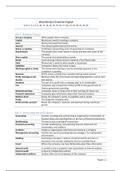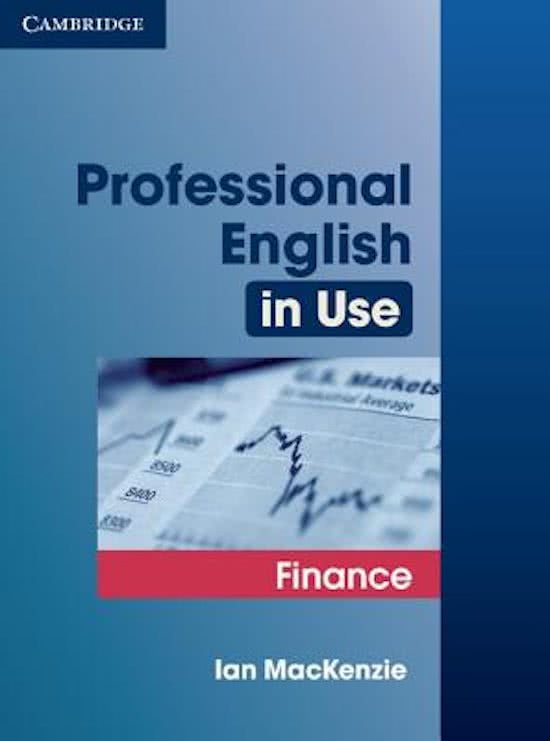Summary
Summary Professional English in Use glossary Unit 2, 3, 4, 7, 9, 10, 11, 12, 13, 14, 15, 16, 17, 18, 22, 23, 24, 41, 42, 43
- Course
- Institution
- Book
Professional English in Use, written by Ian MacKenzie. A glossary of the following units: 2, 3, 4, 7, 9, 10, 11, 12, 13, 14, 15, 16, 17, 18, 22, 23, 24, 41, 42, 43. The glossary contains English terms with an English explanation of the terms.
[Show more]




